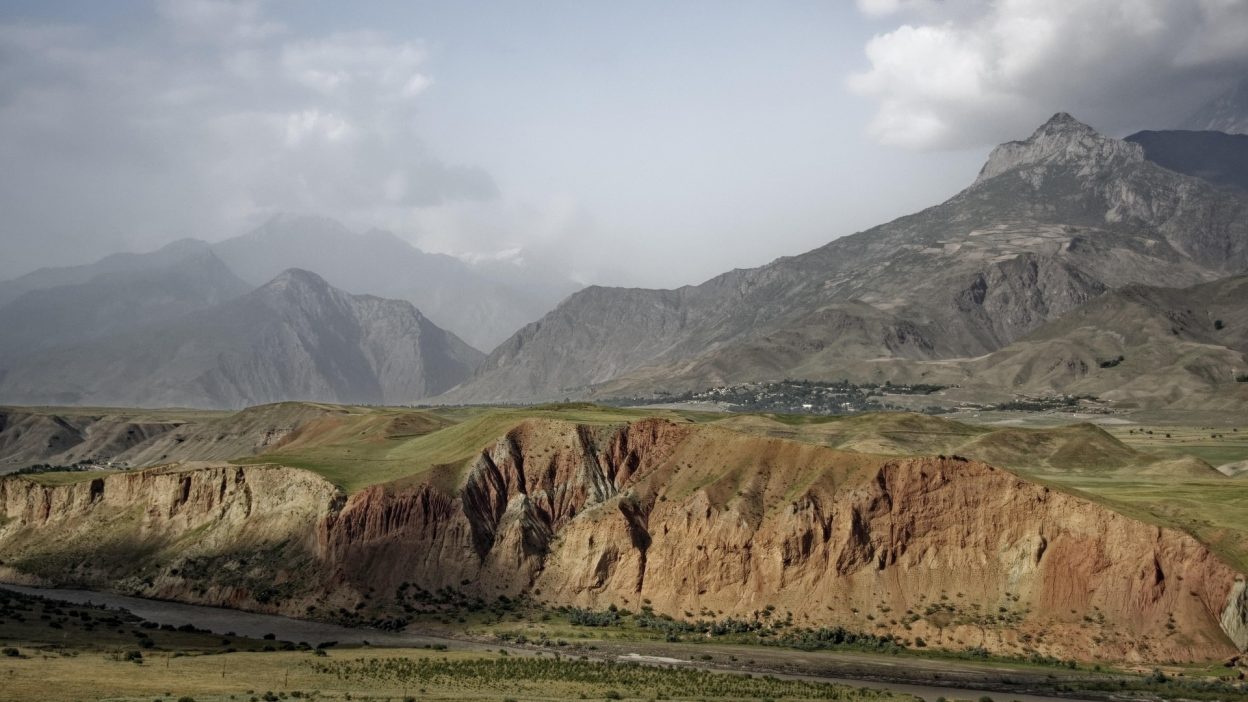How Tajikistan’s Deadliest Disaster Exposed Unforgivable Vulnerabilities
The 1949 Khait Earthquake remains one of the most destructive natural disasters in Tajikistan’s history. It struck with incredible force, causing widespread devastation in the region. The magnitude of the earthquake was such that it left not only the physical landscape altered but also the socio-economic structure of Tajikistan in ruins. In a matter of seconds, Khait, a small town in the south-western part of the country, was reduced to rubble.
Thousands of people lost their lives, and entire villages were flattened. The aftermath saw a massive disruption of daily life, with many survivors facing dire conditions for weeks and months after the event. The damage wasn’t limited to buildings; infrastructure, agriculture, and the very fabric of the local community were severely impacted. The earthquake changed Tajikistan’s approach to disaster preparedness, leaving a legacy that continues to shape the region’s response to seismic activity.
The Untold Truth Behind the 1949 Khait Earthquake Disaster
- Uncovering the Human Cost: Was the Disaster Preventable?
The human toll of the 1949 Khait Earthquake is staggering. Thousands perished in the collapse of buildings, and many more were left injured or traumatised. What’s even more striking is that the region had very little in place to mitigate the effects of such a massive event. The absence of an effective early warning system and preparedness plans contributed significantly to the disaster’s magnitude. Was this disaster preventable? Some experts argue that better infrastructure and foresight could have saved lives, but it was the combination of inadequate resources and poor planning that led to the catastrophic outcome. - The Government’s Response and its Aftermath
In the wake of the earthquake, the government’s response was slow and insufficient. Relief efforts were hampered by the lack of proper organisation, and it took time for aid to reach those in desperate need. The absence of a coordinated rescue operation meant that survivors had to rely on local efforts, and recovery took far longer than it should have. In the aftermath, the government began to reevaluate its disaster response protocols, but the damage had already been done. The slow response to the crisis highlighted deep flaws in the country’s ability to handle such large-scale natural disasters.
When the Ground Cracked: What the 1949 Khait Earthquake Really Cost Tajikistan
The financial and human cost of the 1949 Khait Earthquake cannot be overstated. The earthquake claimed the lives of thousands, leaving many others severely injured or displaced. Economically, the toll was immense. The region’s infrastructure, including roads, bridges, and buildings, was destroyed, taking years to rebuild. Agricultural land, which was vital to the livelihoods of the local population, was also severely damaged, further crippling the community.
The economic recovery from the disaster was slow, and it took a significant amount of foreign aid to help Tajikistan get back on its feet. However, the true cost wasn’t just in monetary terms; the human cost – the lives lost and the long-term effects on survivors – painted a stark picture of how devastating the earthquake truly was.
Shattering Lives: The Hidden Consequences of the 1949 Khait Earthquake
The emotional and psychological impact of the Khait Earthquake is often overshadowed by the physical destruction it caused. Survivors were left to cope with the trauma of losing family members, friends, and their homes. Many people were forced to flee their villages and were left living in makeshift shelters with little to no support. The emotional scars of the disaster stayed with the survivors for years, contributing to long-term mental health challenges.
In addition to the trauma, many of the survivors also faced the burden of rebuilding their lives from scratch. This was particularly difficult for those who had lost everything – their homes, their livelihoods, and, in many cases, their families. The psychological toll of such a disaster cannot be underestimated, and it took years for many individuals to fully recover, if they ever did.
Why the 1949 Khait Earthquake Was More Destructive Than We Thought
The 1949 Khait Earthquake was not only powerful but also unusually destructive for its time. The earthquake’s magnitude and the intensity of the shaking were much higher than anticipated, which contributed to the widespread devastation. Many buildings that were thought to be earthquake-resistant crumbled under the sheer force of the tremor. This raises the question: why was it so destructive?
One of the reasons was the lack of preparedness in the region. Tajikistan, in 1949, had little understanding of earthquake-resistant construction techniques, and the buildings in Khait and surrounding areas were not designed to withstand such seismic activity. This led to the collapse of structures that otherwise might have withstood a lesser tremor. Furthermore, the lack of early warning systems exacerbated the disaster’s impact, as residents had little to no time to react.
The Aftermath of the 1949 Khait Earthquake: Was Tajikistan Prepared Enough?
- Lessons Learned from the 1949 Earthquake Response
The 1949 Khait Earthquake exposed many flaws in Tajikistan’s disaster preparedness. The immediate response was chaotic, with no centralised command to oversee relief efforts. Many victims had to rely on local communities to provide for them, and it wasn’t until days later that national aid was dispatched. Since then, Tajikistan has worked to improve its disaster response protocols, although there are still challenges to address. - How the Earthquake Changed Disaster Preparedness in the Region
In the aftermath, the country focused on improving building codes and infrastructure to better withstand future earthquakes. Investments were made in early warning systems, which now help to reduce the loss of life in the event of an earthquake. The 1949 disaster also prompted international aid organisations to step in and offer support, leading to long-term improvements in the country’s overall resilience to natural disasters.
Could the 1949 Khait Earthquake Have Been Prevented? The Shocking Facts
While it’s impossible to predict when or where an earthquake will strike, the 1949 Khait Earthquake did expose some significant gaps in the region’s preparedness. Could it have been prevented? Some argue that better infrastructure and more robust building standards might have reduced the destruction. Others point to the lack of early warning systems and proper emergency response strategies as key factors that exacerbated the damage.
Ultimately, while the earthquake itself could not have been stopped, the impact might have been mitigated with better planning and foresight. The tragic loss of life and damage to the region’s infrastructure could have been reduced with more stringent safety measures and a quicker, more organised response.
When Earthquake Strikes: How the 1949 Khait Earthquake Exposed Tajikistan’s Vulnerabilities
The 1949 Khait Earthquake revealed several vulnerabilities within Tajikistan’s infrastructure and response mechanisms. At the time, the country had not yet developed an effective system to manage earthquakes. Many buildings were poorly constructed, with no regard for seismic activity. The lack of training for first responders and the absence of a disaster management system meant that the response to the earthquake was delayed and inefficient.
Moreover, Tajikistan’s geographical location in a seismically active region meant that the country was always at risk, yet it lacked the necessary resources to adequately prepare for such an event. This earthquake exposed not only the vulnerability of the region’s infrastructure but also the lack of preparedness on both a governmental and societal level.
The 1949 Khait Earthquake Catastrophe: What the Media Didn’t Tell You
The media coverage of the 1949 Khait Earthquake focused primarily on the destruction, but there were deeper, untold stories that didn’t make it into the headlines. While reports highlighted the human cost and the physical damage, they often overlooked the heroic efforts of local people who banded together to help each other in the absence of official aid. Many survivors worked tirelessly to rescue loved ones and rebuild their communities, demonstrating extraordinary resilience.
Additionally, the role of foreign aid and international assistance in Tajikistan’s recovery was often downplayed in the media. This external help was crucial in rebuilding the nation and providing the necessary resources for recovery, but it wasn’t always acknowledged in mainstream reports.
Conclusion: The Enduring Legacy of the 1949 Khait Earthquake
The 1949 Khait Earthquake left a lasting legacy on Tajikistan, not only because of the destruction it caused but also because of the lessons it imparted. Tajikistan has since taken major strides in improving its disaster preparedness, but the events of 1949 continue to shape how the country prepares for future seismic activity. The earthquake was a wake-up call for the region and the world, highlighting the importance of preparedness and the need for more effective response mechanisms.
5 Short FAQs
- What caused the 1949 Khait Earthquake?
The 1949 Khait Earthquake was caused by tectonic plate movement along the border between the Indian and Eurasian plates. This seismic activity led to a powerful earthquake in the region. - How many people died in the 1949 Khait Earthquake?
Around 28,000 people died as a result of the earthquake, making it one of the deadliest in the region’s history. - What measures have been taken to prevent similar earthquakes in Tajikistan?
While earthquakes cannot be prevented, Tajikistan has strengthened building codes, improved early warning systems, and increased public awareness to mitigate future disasters. - How did the 1949 Khait Earthquake affect Tajikistan’s infrastructure?
The earthquake completely destroyed Khait and surrounding areas, devastating infrastructure like roads, bridges, and homes, leading to a slow recovery. - What were the main lessons learned from the 1949 Khait Earthquake disaster?
The disaster taught Tajikistan the importance of preparedness, early warning systems, and effective disaster response strategies to reduce future loss of life.
References:
1949 Khait Earthquake – Wikipedia
https://en.wikipedia.org/wiki/1949_Khait_earthquake
The Tragedy of Khait: A Natural Disaster in Tajikistan
https://bioone.org/journals/mountain-research-and-development/volume-21/issue-1/0276-4741_2000_021_0091_TTOKAN_2.0.CO_2/The-Tragedy-of-Khait-A-Natural-Disaster-in-Tajikistan/10.1659/0276-4741%282000%29021%5B0091%3ATTOKAN%5D2.0.CO%3B2.full
Khait Landslide – Wikipedia
https://en.wikipedia.org/wiki/Khait_landslide
Today in Earthquake History – USGS
https://earthquake.usgs.gov/learn/today/index.php?day=10&month=7
On the 70th Anniversary of the 1949 Khait Earthquake in Tajikistan
https://link.springer.com/article/10.3103/S0747923920040088The 70th Anniversary of the 1949 Khait Earthquake
https://ifz.ru/journals/qes/46-3/11-VIS-46-3-eng.html




